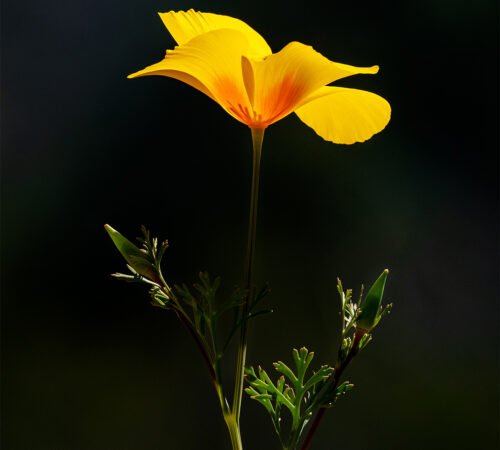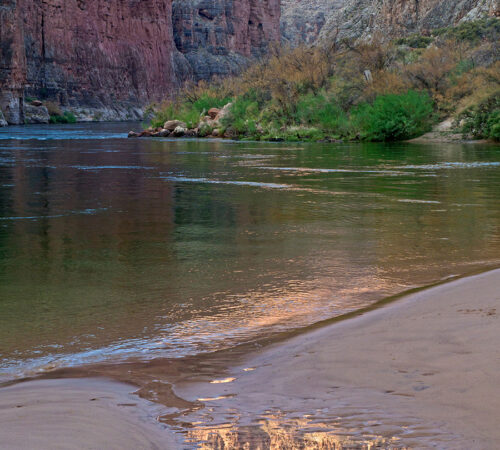Once a Beginner, Stay a Beginner

Dear Bubbles:
You’ve been at this photography thing for a while. What advice would you give to beginners?
~Just Started, But Excited!
Dear Just Started, But Excited!
Congratulations on your new start! Welcome to the wonderful world of photography, where you’re sure to never see the landscape or yourself the same way ever again. I hope you find so much joy in expressing yourself in this way.
It’s hard for me to believe, but I’ve been at this almost 21 years now. That September day in 2021 when I walked into the Chandler-Gilbert Community College and heard about shutter speeds and ISOs and light was so profound for me, I still have the outfit I wore—a burgundy sweater set with khaki pants—hanging in my closet. I keep it so I never forget where I came from. It still feels like that first happened just yesterday…
Over the years, I feel so fortunate to have had so many teachers and mentors and every spontaneous interactions with strangers that have yielded such useful guidance. I owe a debt of gratitude to all who have influenced my ideas, actions, and decisions. I hope you experience the same support in your journey. Keep asking questions!
If I could go back in time and have a chat with that excited, nervous woman I was when I first started, here’s what I would suggest to her and to others in a similar position:
Chill out and take all the time you need to understand your new camera and the technical functions of photography. One of the most frustrating times when I took up photography was when I could see a scene with my own eyes but couldn’t for the life of me get it out of my camera. I had to wait days to get the film back only to find I hadn’t recorded the essence of the scene. It was maddening! (Mind you, we didn’t have iPhones to make quick and easy happy snaps to fall back on either…)
Be patient with yourself as you navigate your camera’s menu system, learn difficult concepts like depth of field, and make a lot of images you thought would turn out but didn’t. Think of yourself as a problem solver. Take the extra minute or two to discern what you like and don’t like about your photograph. Be specific! Go beyond “I just don’t like it.” Ask why. Then figure out how to address that. Remember, you don’t work for the camera. The camera works for you.
Value growth over producing results. It is OK if you don’t get it upon first hearing a term or technique. It is also OK if you don’t get it after 10 or 15 years. Recognize when you get frustrated and take a deep breath. Give yourself the space and grace to explore these new ideas without judging yourself and you’ll find this to be a much more enjoyable endeavor. Keep trying, analyzing, and learning—and have a damn good time doing it too.
Growth need not be rushed. No one cares how long it takes you to understand hyperfocal distance. No one is going to time you on how long it takes you to set up your tripod. Getting frustrated with yourself won’t make it any easier on you or make you learn it any faster. Relaxing will. Author Malcolm Gladwell wrote that one needed to invest 10,000 hours of deliberate repetition to master any skill. While experts argue whether it’s 10,000 hours or 7,496 hours, or 12 hours, the point is, if you don’t practice with consistency, you’ll remain stuck where you are. One step at a time.
Besides, there is no finish line when it comes to photography. It’s an endless cycle of learning no matter how long you’ve been at it. There’s so much to know and try! The second I stop learning about photography is the second I hang up my camera. This is supposed to be fun, remember?! Get out of your own way. And I’ll repeat, be patient with yourself.
Shadows matter too. We routinely hear that photography is all about “chasing the light.” After all, the very word “photography” comes from the Greek words for “to paint with light.” If all you pay attention to is light, though, you’ll become a master at rendering flat, evenly-illuminated scenes. Learn to see the shadows and incorporate them into your compositions too.
To render dimension in a two-dimensional media that lacks depth, the camera needs to “see” contrast. In other words, light and shadow working together. Sometimes it’s as easy to find by moving a few steps to the left or right. Sometimes it requires more thought and action. Visualize the angle of light using tools like The Photographer’s Ephemeris or Photo Pills. Then understand how the quality and quantity of light changes throughout the day and what you can make out of the numerous weather conditions.
Your creativity doesn’t turn on at sunrise then off during the middle of the day until sunset occurs. Or when it’s a clear blue sky. Or when it’s raining horizontally. Your ability to develop meaningful connections with the landscapes doesn’t ever turn off. Which means, neither do all of the potential photographic opportunities.
(If I may be permitted a moment to shamelessly self-promote, to learn more about how to evaluate and incorporate natural light, pick up a copy of my “Seeing the Light in Outdoor Photography” eBook. Note that it was the first instructional eBook I published. That’s how important I felt light—and shadow!—was to my own and others’ work.)
Get close to your subjects, then get closer. If you wish for your viewers to feel like they are in your picture, you need to be in your picture first. Keep it simple. Fill the frame with your visual message and only it and any supporting context. Eliminate anything extraneous or distracting—by moving your feet (or zooming in if you’re standing on the edge of a cliff…).
Photographers sometimes feel nervous about getting close to their foregrounds because it risks throwing part of the frame out of focus. I sure was. Annnnd I made a lot of out-of-focus images once I did get within a foot or two of my foreground subjects. If you’re concerned about this, making friends with the concepts of depth of field, hyperfocal distance, and focus stacking should be high on your to-learn list.
Make A LOT of bad images. With film, I worried incessantly about making a bad frame. After all, with a 4×5 large format camera, making a bad image cost me almost an hour of time just to set up and $15 a composition when you factor in the cost of the film, twin-checking (i.e. bracketing–making multiple slides at different exposures to push or pull light in the development stage), and processing. Today, the cost of a bad frame is essentially a few seconds and free! So you have little to lose now!
I still make A LOT of bad images. The beautiful thing about photography? No one ever asks to see our mistakes. We can hide them on our hard drive or delete them. Also, no one ever asks how many bad images we made to get to the one of which we’re proud. We don’t track batting averages in art. (Mine’s 0.287, in case you’re wondering, meaning I share only about 2.87% of my images publicly.) So keep shooting without holding onto any fear about the consequences of messing up. Because there are few…
I can hear some of you laughing now and saying, “But Bubbles, I’m already really great at making a lot of bad images unintentionally!” The key to making bad images is to not spray and pray, where you make a bunch of images and pray one comes out. This mindless approach is hardly rewarding—or successful. Instead, review and assess what went well and what went wrong after each attempt. Learn from each frame and deliberately do something different on the next one asking “What if I tried this…?” It’s of my opinion that if you aren’t making a lot of bad images—and learning from them—you aren’t pushing the boundaries far enough.
Create your own definition of what a “good” photograph is—and let it evolve. I originally believed a good photograph meant it was in focus, properly exposed, strictly followed the Rule of Thirds. I used to run around the coast or the desert saying to myself, “Quick! Find a stick to put in the foreground!” Once I did that, I sat and waited and waited and waited and waited and waited for “good” light, meaning a fiery red sunrise or purple-hued sunset. Then I sought external validation. I knew if my mom liked it, it was a keeper. I knew if someone other than my mom bought the photograph, I was truly onto something special.
I threw all of that out the window in 2013, during my third Artist-in-Residency when I ran out of ideas and got bored as hell with photography. To get reinspired, I had to change the game. Now I define a “good photograph” as:
- An outward expression of something the photographer deemed meaningful enough to notice while living life.
- Expresses what the photographer fell in love with or felt moved otherwise in some significant way beyond just “liking” a scene or subject.
- Shows the extraordinary in the ordinary, as defined by the individual photographer.
What’s meaningful and extraordinary and good are in the eyes of the beholder. We can all have different definitions and different responses at different stages of our development and all be right answers. So ask yourself on occasion: what does success in your own photography look like? What makes a good picture for you? Understand that your definition can—and will—change over time as you grow into the medium. It’s OK to change your answer as you learn.
“Finding your style” is a colossal waste of time. Rather climbing back on my style soapbox and regurgitating the lengthy dissertation I wrote about this topic, please read (or reread) my earlier Dear Bubbles column on “Developing Your Style.” In short, follow your curiosities and make photographs you love no matter what anyone else thinks. Repeat for the rest of your life. The end.
Fear and frustration are a normal part of the creative process. Choose to plow through both because that’s the only way through them. They never go away on their own. They are creations of our own minds. Tame the negative voices in your head and replace them with positive words of affirmations with every step you take. Yes, even while you struggle to understand how a filter attaches to your lens, tell yourself, in the words of Stuart Smalley from Saturday Night Live, “I’m good enough, I’m smart enough, and doggone it, people like me.” Because you are, you are, and people do.
Thinking you suck or cutting yourself down does no one any good. It doesn’t help or motivate you. It sure doesn’t make you feel good. These thoughts come from unfair and unrealistic expectations that you should in a different place in your journey than where you currently are (which often arise from comparing yourself with others). If you’re doing this, cut that out right now, I beg of you. Everyone is on a different path and going at a different pace. Have confidence in yourself and believe that you’re doing the very best you can. Because I know you are.
Stay a beginner for the rest of your life. Embrace “shoshin.” Shoshin is the Zen Buddhism term for embracing a beginner’s mind, to approach the world with openness and enthusiasm as if you’ve never seen it before. As if you were a child discovering the magic of every rock, every flower, every button on your camera. This is how we see the extraordinary in the ordinary, revisit places with fresh eyes, and connect our sense of awe with the environment around us. As Zen master Shunryu Suzuki said, “In the beginner’s mind, there are many possibilities, but in the expert’s there are few.”
With that, as you progress in your photography journey, I hope you go from “Just Started, But Excited” to “Still Starting, Still Excited” as the time passes. All the best to you for a fulfilling ride!
Be well, be wild,
Bubbles
Have a question about photography, art, and/or the creative life? Need some advice? Looking for inspiration? Send your question to Dear Bubbles at [email protected] to be possibly featured in a future column post. (If you’d prefer a different display name than your real first name, please include your preferred nickname in your note.




